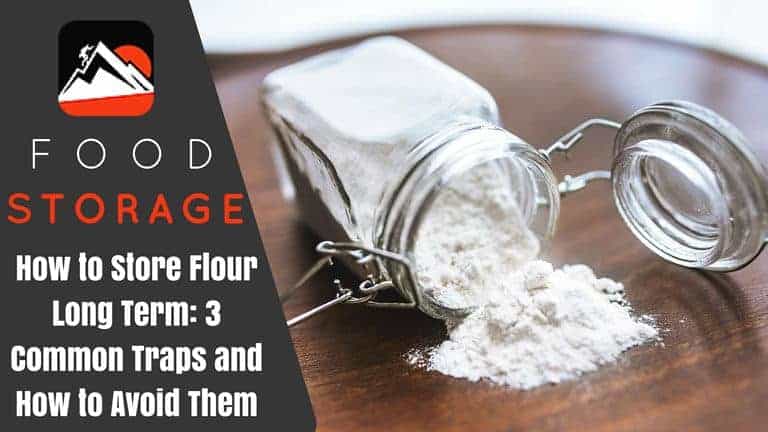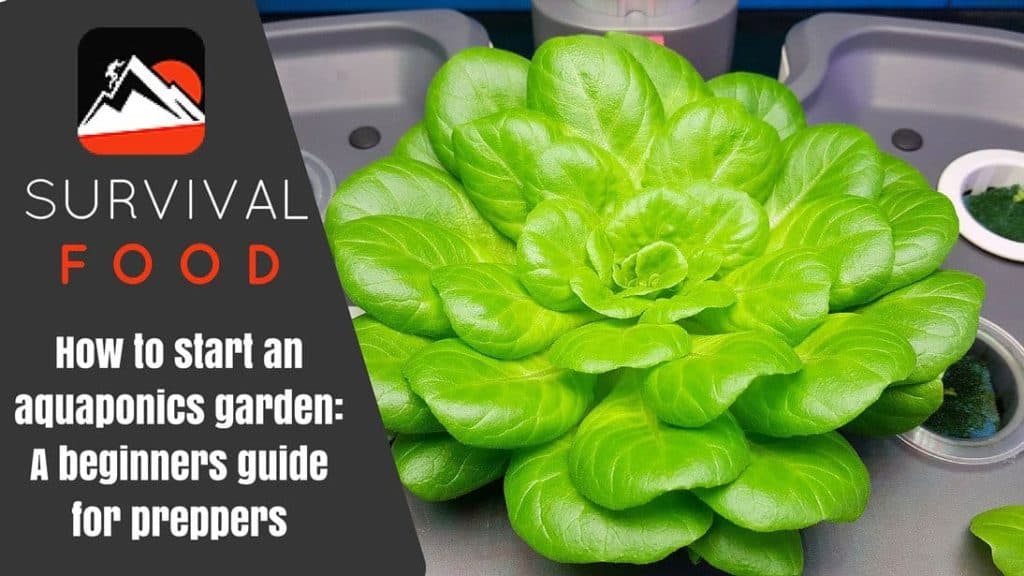Contents
Have you ever “stood guard” right by the oven so that you could get that very first piping hot piece of fresh bread, pizza, pie, or cake? Taste aside, flour based food are also a staple for preppers. Given my love for all things baked, I began asking “How to store flour long term” very early on in journey as a prepper. Over the years, I have tried a number of different methods with varying degrees of success. This article introduces the three common culprits to long term flour storage and some possible ways to overcome them.
Humidity and Moisture
Do you remember those old science lessons where water was called the universal solvent? Aside from that, water absolutely necessary for life. As such, if flour is exposed to moisture, mold, mildew, bacteria, and fungal organisms are bound to start growing. Unfortunately, because flour has a large surface area, it is very easy for moisture to get trapped in the flour and lead to spoilage.
Heat
Heat can cause flour to spoil in two ways:
- Higher temperatures cause the breakdown of oils and other compounds in the flour.
- Many species of bacteria, fungi, and mold grow best in room temperature ranges. As long as there is food (in the form of the flour), water, and enough heat, rest assured these organisms will ruin the flour.
Oxygen
When an atom of oxygen comes into contact with another type of atom or a molecule, it may take electrons away from the other element or molecule. Rust, brown coloring on apples, and spoiling flour are all examples of oxidation. In the case of flour, the oxygen makes it possible for yeast, mold, and bacteria to grow. Since all flour has at least some native, or wild yeast in it, the presence of oxygen will always cause the flour to become rancid. Perhaps even worse, if there is oxygen available, insects can also live in the flour.
You might also find interesting our article about storing rice for emergencies.
Storing Wheat Berries vs. Milled Flour
There is a considerable amount of controversy over whether or not wheat berries will last longer than milled flour. I have found that if you do not control the three factors listed above, the results are about the same. In the end, you can try storing some of each, however, at best, the berries won’t last more than a few months longer than ground flour.
Pros and Cons of Underground Storage
Even though many people start off by storing airtight buckets of flour in the basement, I tend to stay away from this method because hurricanes and other natural disasters can easily cause a basement to flood. Aside from that, many basements may have a lower temperature, but the moisture level may be difficult to control. I prefer underground root cellars because they can be dug just about anywhere and the temperature will be stable all year round. You will still have to control oxygen levels with absorbing compounds and then make sure the flour is in a completely water tight container. The biggest problems with root cellars are:
- it may be a problem to get into the root cellar quickly if you have to pick up all your goods and evacuate
- animals burrowing underground may get into a non-fortified bunker and eat the food
We also recommend checking our guide about storing pancake mix for emergencies.
What About Oven Canning?
Oven canning uses heat to drive moisture out and kill microorganisms found in the flour. Once the temperature is hot enough, simply seal the lid to create an airtight seal. There is a considerable amount of controversy surrounding this method. According to Kellene, Preparedness Pro, “There is no need to oven can items such as rice, whole grains, and beans. Why spend all of that time oven canning something that will keep perfectly fine in a properly sealed food-grade bucket or mylar bags? Plus, all of those jars?”
I should point out that this post also talks about using diatomaceous earth (DE) to control insects. While food grade DE is perfectly safe, it does not work on all insects. Furthermore, if the flour has moisture in it, the DE will not be able to eat through the exoskeleton of insects that are more susceptible to it.
Vacuum Sealing
Years ago, I learned the hard way that vacuum sealing doesn’t always mean food will stay fresh. While some oxygen may be taken out, vacuum sealing will not remove all the air. Moisture will also remain in the bag. In addition, vacuum sealing cannot compensate for temperature. If there is enough air in the bag and enough moisture, bacteria, mold, yeast, and mildew will still grow on the flour. I do recommend vacuum sealing for short term freshness on containers that will be opened or closed often, but I have serious reservations about using it for long term storage.
We also recommend reading our article about storing dehydrated food for emergencies.
Oxygen Absorbents
Although I haven’t used the DIY oxygen absorbents, I found the commercial ones worked well enough. Just add a packet to your flour bucket store in a cool, dry, place. If you decide to use this method for long term storage, start from now to see if you can make viable oxygen absorbents from iron filings scavenged from steel wool, and then see how long the flour will last when compared to other storage methods.
[embedyt] https://www.youtube.com/watch?v=BxX18x1swV0[/embedyt]
Conclusion
As you can see, there are many ways to overcome the three obstacles associated with storing flour long term. Please feel free to add your favorite method in the comment section. If you have experience with the methods listed above, I’d also love to hear about your results. I have some test jars on the way to 10 years but am always looking to see if there are better methods available.
If you want to continue learning about food preservation, check our article about storing powdered milk long-term by clicking here.
Recommended Resources:





Huh. We routinely have more than a year’s supply of white flour ahead for normal baking and cooking purposes. All we do is put the sealed paper bag of flour into a plastic grocery bag to keep some of the humidity out and keep it at room temperature in our pantry. We’ve never had it go bad: No bugs, mold, not rancid, etc.
I agree with Randy Aitch, I have used the same method for LONG periods of time!